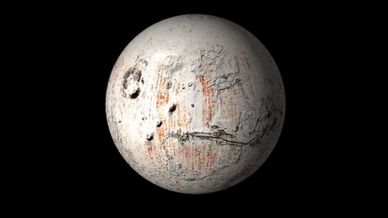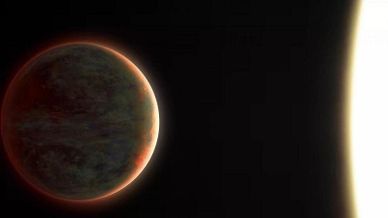Discovery will help to understand the origin of life on Earth.
Astronomers at Leiden University have been able to observe the formation of the planet and capture an organic molecule called dimethyl ether. It is the largest molecule recorded on a planetary disk.
The results will help to understand the origin of life on other planets, as well as in the solar system.
Was the study Published In the scientific journal Astronomy & Astrophysics.
The forerunner of life
Dutch astronomers at the University of Leiden have studied the chemistry of a protoplanetary disk around the young star IRS 48. The protoplanetary disk is composed of tiny particles of dust and gases from which planets collide to form planets.
Such collisions are most likely to occur on disks around the star IRS 48. Previous research has shown that a more pronounced cluster in the shape of a nut is formed on a disk, indicating the presence of an emerging planet. .
This time, scientists were able to find an organic molecule called dimethyl ether, which contains a total of nine atoms in the disk. It is the largest molecule ever found in a protoplanetary disk.
The importance of the discovery is further strengthened by the fact that dimethyl ether is a precursor to the formation of more complex molecules, which may eventually lead to the formation of life.
“From our results, we can learn more about the origin of life on our planet. Thanks to this, we can get a better idea of the potential for life on other planetary systems,” explained Nasantha Brinken, lead author of the study.
The researchers also recorded the presence of an organic molecule called methylformate in the disk. Like dimethyl ether, it is a building block for more complex molecules that make up organisms. However, this finding needs to be further confirmed through further observations.
Formation of organic molecules
Molecules such as dimethyl ether are thought to form on disk before the central star is formed. First, simple compounds “cling” to the dust, creating an ice shell because the protoplanetary discs are relatively cold. At the same time, they begin to react with each other to form more complex and larger molecules.
Recent studies have shown that IRS 48 contained a large amount of ice during the formation of the new planet. Therefore, scientists are now focusing on this area in the hope of finding more complex molecules even after the formation of a central star.
The discovery of dimethyl ether suggests that many other complex molecules commonly found in stellar regions may be hidden in the ice structure of the planets that make up them.
“What makes this discovery even more exciting is the fact that these complex molecules are directly involved in shaping the planet. It was not yet known,” said co-author Alice Booth.
“Through further observations, we can go one step further to understand the origin of prebiotic molecules in our own solar system,” concludes Nienke van der Marrell, another author.

Prone to fits of apathy. Unable to type with boxing gloves on. Internet advocate. Avid travel enthusiast. Entrepreneur. Music expert.






